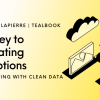We know that digital processes create leaner, more agile operations, not to mention financial and time savings. So why are so many businesses still unable to part with the millions of pieces of paper which are printed across the globe each year, despite the fact that the majority of this paper will be used once, then thrown or filed away?
The latest findings from Xerox’s Digitisation at Work report reveal that the concept of digital transformation is attractive to most but achieved by the limited few. It is here that I believe there is a real opportunity for outsourcing to bridge the paper/digital divide.
What’s the state of play?
We spoke to 600 IT decision-makers across a range of large organisations. According to our findings, less than 50 per cent of organisations currently use processes that are mostly or fully digitised. However, we also discovered that many foresee a workplace that is both digital and automated. A significant 85 per cent can readily identify workplace processes that are candidates for automation technologies, finance and customer care being the prime candidates.
Interesting ambitions, but these seem a long way off when you consider that 37 per cent of those surveyed work for an organisation which does not yet have a social media strategy in place, while 40 per cent have not implemented solutions for mobile working.
So if 2015 was the year when digital working and automation became more widely adopted and understood by businesses, is 2016 the year we start seeing the impact?
To allow this to happen, there are five key areas where outsourcing can help companies get a handle on their processes and create lasting, company-wide digital strategies:
1. Get a visual on paper workflows
One of the biggest surprises of our report was finding that so many organisations (55%) are missing the upfront analysis of how paper processes are currently running. With assessment tools in place, we’ll see more companies take advantage of the central configuration and monitoring of digitised workflows in coming months, much like how network operations centres currently function.
2. Analyse what’s going on
Processes are becoming smarter and advanced analytical tools will drive genuinely useful data about who is accessing what document, and when. We should continue to evaluate that companies have the right tools in place for the right processes on a regular basis.
3. Share updates
Going forward, we expect to see more organisations take advantage of the real-time status updates that are delivered, using them for greater work tracking across various processes and ultimately, to change the functioning of that service altogether. For example, electronic records with ‘intelligent paper recognition’ are saving time, money and space for Luton & Dunstable University Hospital and leading to better patient care.
4. Scale out
In the digital age, there are many such automation tools that businesses can scale quickly to take on additional work. At present, 45 per cent of those surveyed work for an organisation which does not currently use intelligent automation technologies. Inevitably, we’ll see more businesses use software which can mimic humans by manipulating data, triggering responses and processing transactions.
5. Teamwork
With greater levels of analysis and assessment now possible, businesses will be closer to making the full transition into digitised processes. Handoffs between human employees and automated bots in a given workflow will become increasingly seamless.
Businesses will soon take the steps above to move beyond small, isolated pockets of automation and identify new opportunities to build comprehensive strategies and tools. They will be looking for partners that can ensure these tools have the potential to impact the entire business, not just part of it.
With so much potential for positive change, outsourcing partnerships can help businesses finally make the jump into fully digitised processes, and start to make good headway on the promises of transformation.









